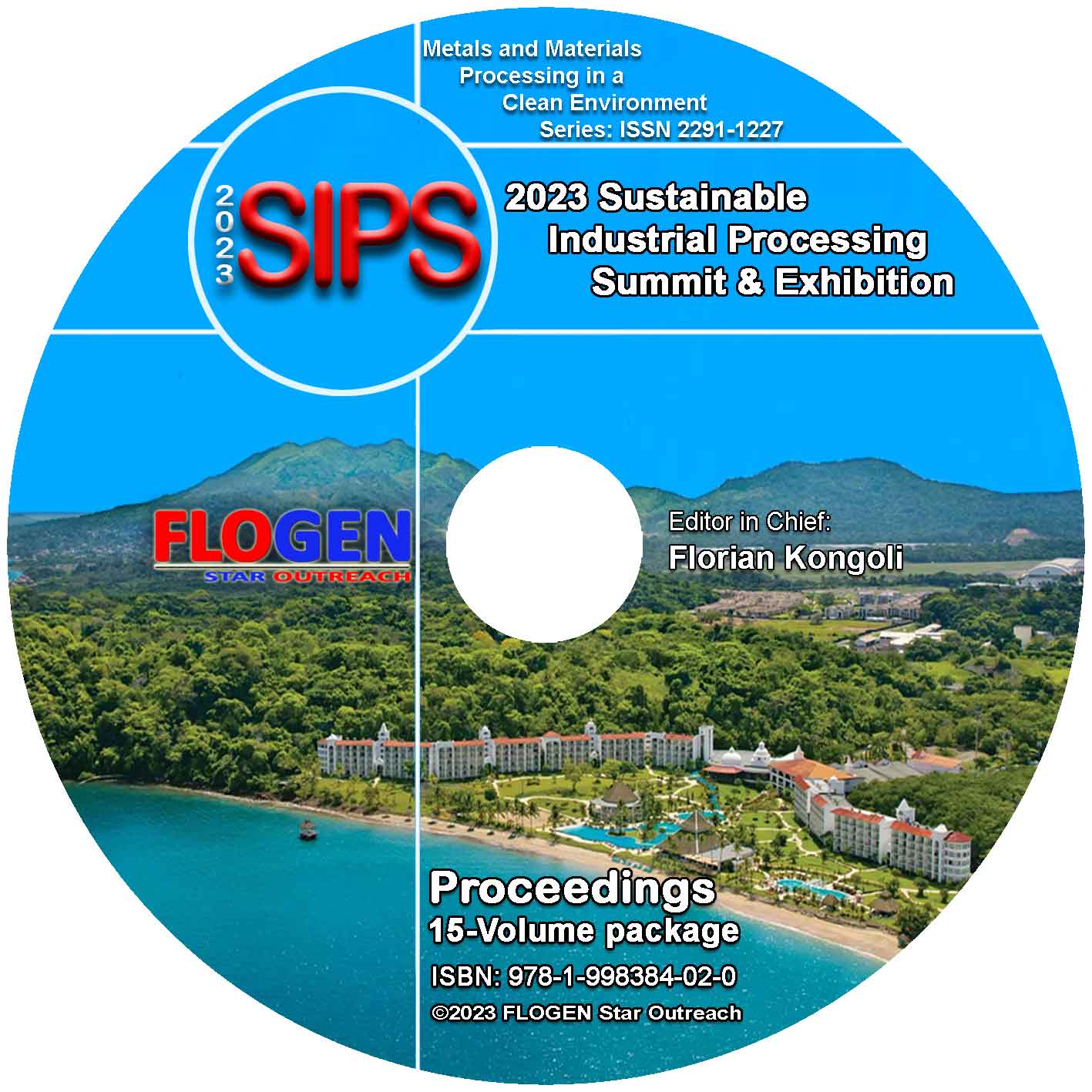2023-Sustainable Industrial Processing Summit
SIPS2023 Volume 4. Echegoyen Intl. Symp / Nanomaterials for Future Energy Demands
| Editors: | F. Kongoli, M.P. Brzezinska, M.A. Alario-Franco, F. Marquis, M.S. Noufal, E.Palomares, J.M. Poblet, D.M. Guldi, A.A. Popov, A.R. Puente Santiago, B. Raveau, D. G. Rodriguez, S. Stevenson, T. Torres, A. Tressaud, M. de Campos |
| Publisher: | Flogen Star OUTREACH |
| Publication date: | 21 December 2023 |
| Pages: | 166 pages |
| ISBN: | 978-1-989820-78-0 (CD) |
| ISSN: | 2291-1227 (Metals and Materials Processing in a Clean Environment Series) |

CD shopping page
AN INVERSE ELECTRON DEMAND DIELS-ALDER REACTION FOR FULLERENES AND METALLOFULLERENES
Jianyuan Zhang1; Yue Sun1;1RUTGERS UNIVERSITY, Piscataway, United States;
Type of Paper: Invited
Id Paper: 21
Topic: 16
Abstract:
In the past two decades, various cycloaddition reactions to modify fullerenes have been developed as highly robust, modular, and functional-group-tolerant methods, including the Diels-Alder cycloaddition, Bingel-Hirsch cyclopropanation, Prato 1,3-dipolar addition, diazoaddition, benzyne addition, etc. To a large extent, the reactions on endohedral metallofullerenes (EMFs) mirrored these reactions. Fullerenes and EMFs are typically electron acceptors in these nucleophilic additions. The reactivity and regioselectivity are highly similar, which brings consistency but also limitations. First, certain fullerenes (e.g., C60) are reactive in many reactions, but relatively electron-rich species, such as EMFs, often require harsh conditions, more equivalents of small-molecule reactants, and even so may still have low yields, and sometimes, no reaction. Moreover, in the small-molecule reactants, if there are electron withdrawing groups (EWG) affecting the reaction site, the reaction is difficult. Meanwhile, from a regioselectivity point of view, when other factors are comparable the electron-deficient bonds tend to react which limits the feasibility to regioselectively functionalize an electron-rich bond.
Here we report a new inverse electron demand Diels-Alder (IEDDA) reaction in which the fullerene and EMFs are electron donors, and the diimines, analogue of dienes, are the electron acceptors. In the IEDDA reactions, diimines were generated in-situ with an oxidizing agent, such as PbO2. Contrary to the trend in most fullerene additions, the diimines with electron withdrawing groups show higher reactivity. On C70, the unusual cc-[5,6] adduct was the major product. Metallofullerenes Sc3N@C80 and Lu3N@C80 show higher reactivity than empty fullerenes C60 and C70. The adducts were characterized by single crystal structures and were found to be [5,6] adducts. Moreover, the reaction on EMFs were reversible, providing a new approach for chemical separation of EMFs.